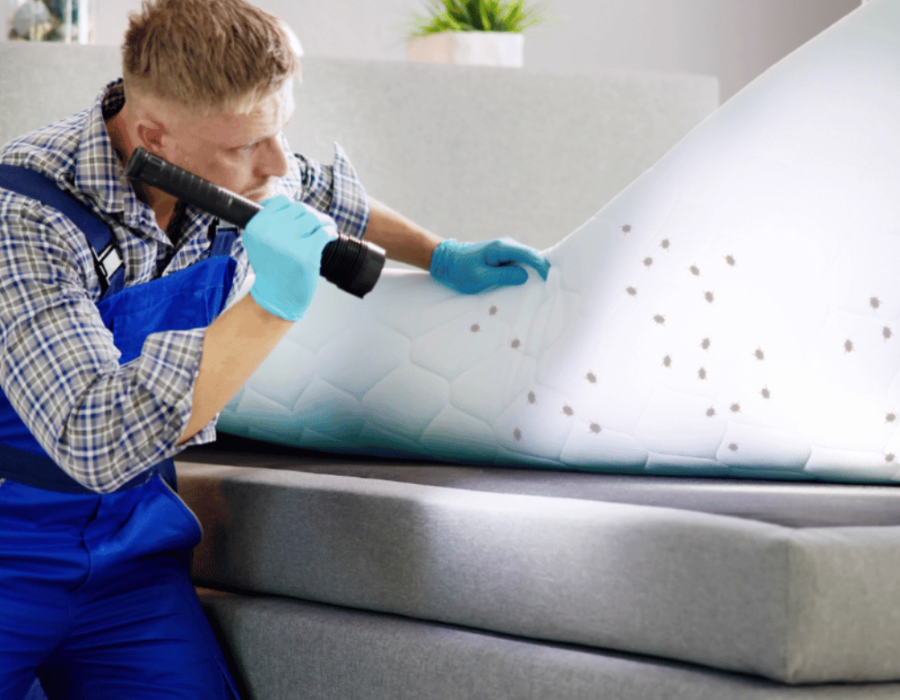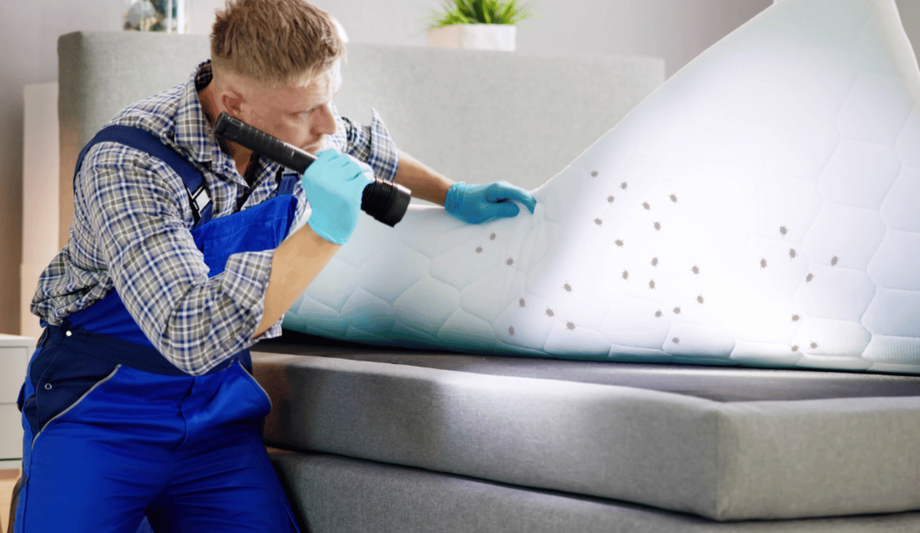Bed bugs are tiny, reddish-brown insects that feed on human blood, often causing itchy bites and sleepless nights. These pests are notorious for hiding in small crevices like mattress seams, furniture joints, and even electrical outlets. An infestation can rapidly escalate if not addressed early. That’s why both bed bug inspection and bed bug removal are critical to maintaining a pest-free home environment.
Early Signs of a Bed Bug Infestation
Catching a bed bug problem early is key. Common signs include small blood stains on sheets, dark fecal spots on mattresses or nearby furniture, and an unexplained musty odor. You may also find tiny eggs, shed skins, or the bugs themselves. Because they are nocturnal, bed bugs can be difficult to detect without a thorough bed bug inspection. Early detection can make removal more manageable and less costly.
Where to Inspect for Bed Bugs
When performing a bed bug inspection, you need to check all the likely hiding places. Start with your mattress, particularly along seams and under labels. Then, move on to nearby furniture such as nightstands, headboards, and couches. Don’t overlook baseboards, cracks in walls, behind picture frames, or under carpets. These pests are excellent at staying out of sight, so patience and attention to detail are vital during the inspection phase.
DIY vs. Professional Bed Bug Inspection
While you can carry out a basic bed bug inspection on your own, hiring professionals ensures a more thorough check. Pest control experts use tools like detection dogs and specialized flashlights to find hidden infestations. If you're unsure about what you're seeing or want confirmation, professional services provide peace of mind and a more accurate assessment.
The Importance of Immediate Bed Bug Removal
Once an infestation is confirmed, swift action is necessary. Bed bugs reproduce quickly, and the longer you wait, the harder they are to eliminate. Bed bug removal isn't just about killing the visible bugs; it’s about disrupting their entire life cycle. Eggs can survive many over-the-counter treatments, which is why a well-planned approach is essential.
Effective Bed Bug Removal Methods
There are several proven methods for bed bug removal, including:
· Heat Treatment: Bed bugs die at high temperatures, making professional heat treatments one of the most effective options.
· Chemical Treatments: Insecticides can be used, but they often require multiple applications and pose risks if not handled properly.
· Vacuuming and Steam Cleaning: These are good initial steps for reducing numbers but often can’t reach hidden eggs.
· Encasements: Mattress and box spring encasements trap bugs inside and prevent new ones from getting in.
A combination of these methods often yields the best results. Professional pest control services typically use integrated pest management strategies to address the problem comprehensively.
Preventing Future Infestations
After bed bug removal, prevention becomes your next priority. Avoid bringing used furniture into your home without a thorough inspection. When traveling, inspect hotel beds and keep your luggage off the floor. Using bed bug-proof mattress covers and regularly vacuuming can help keep your space safe. Vigilance and routine checks are your best defense against another outbreak.
Conclusion
Dealing with bed bugs is not just about discomfort—it’s about protecting your health and peace of mind. Whether you’re identifying an infestation or tackling full-blown bed bug removal, the right knowledge and professional support make all the difference. A comprehensive bed bug inspection followed by targeted removal measures ensures your home stays pest-free. For trusted, expert help with bed bugs and other pests, visit wisepestsolutions.ca.






Comments